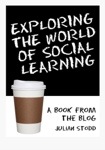Fig.1. Bristol Fighter at the Imperial Museum
My understanding of curation is embedded in museums - I overheard the curator of the current Superhuman exhibition at the Wellcome Foundation Museum being interviewed by Aleks Krotovski on Tuesday.
When I took a picture using my iPad a member of the museum staff politely told me that 'the curator asked that people did not take pictures' (and that the curator was in part to blame as he hadn't wanted the signage saying 'don't take pictures' too prominent) – curator as stage manager and executive producer of a collection of themed objects. The term 'object' itself embracing stills, artefacts, video-clips and activities. You curate stuff in a space and set parameters so that an audience of visitors can get their head around what, in effect, has come the curator's mind.
In the bizarre ways that these things happen I recall, age six at most, creating a fossil museum with ammonites found in the low rocky cliffs of Beadnell, Northumberland.
I was a curator, I brought together a themed collection of rocks, set them out in a room and invited people in – no doubt in the back of my mind imagining the glass cabinets and displays in the Hancock Museum, Newcastle.
Ian McGreggor of the British Museum with his History of the World in 100 objects is a curator - far more so than an amateur's eclectic collection of e–stuff. Or am I being a 20th century snob? Craving for academic elitism that is fast vanishing down the plug–hole as the digtal ocean and equally digital–cloud washes and blows over everything? I search that externalised part of my own mind, an extensive blog 13 years in the writing, for what I've said or stumbled upon before regarding 'curation' and find three entries, one prompted by my intention to attend this session in Bath and feeding off a visit to the De le Warr, Bexhill and the rest from Martin Weller's book 'The Digital Scholar' in which he lists curation as something universities will need to do. On Chapter 12 he has this list on publishing as:
- Publishing
- Research
- Authoring
- Submission
- Rejection/modification
- Publication
- Dissemination
WHY?
- Accepted practice
- Academic respectability
- Reward and tenure
- Dissemination
- Curation
I wonder if this following quote gives a sense of Martin Weller's comprehension of the term 'curation' as used in a Web 2.0 context:
'If Boyer's four main scholarly functions were research, application, integration and teaching, then I would propose that those of the digital scholar are engagement, experimentation, reflection and sharing'. Weller (2011).
On a quest to become 'digital scholars' or 'thought leaders' we should, to change one word –engage, experiment, reflect and curate'? The word, used in this, come to think of it, ought also to include 'moderate', even to 'chair' or 'host'.
In 2002 Gilly Salmon, then a lecturer at the Open University Business School, tried to coin the terms e–tivity and e–moderator.
Perhaps then, as these things go, the digital community have not picked up on these terms – instead they have hijacked 'curation'. We are going through a rich phase of redefining and inventing words and understandably they result in carnage and debate. Academics are guilty I feel of sometimes wanting to be the first to coin a word or use a new phrase or word in a new way because citation will mean that they are then quoted for every more. This happens in academic publishing and study, unfortunately 'curation' can leave you wondering about the source. Is 'jumbling together' the content of others from multiple sources even more questionable than turning to self–monitored wikis such as wikipedia?
Weller also says:
'If the intention is to encourage engagement then low-quality routes may be more fruitful than seeking to produce professional broadcast material'. Weller (2011) and 'Low quality individual items because of their obvious ease of production, can be seen as an invitation to participate'. Weller (2011)
Is curation a dirty word? Is curated content reliable? What does it mean in the corporate world?
REFERENCE
Krotovski, A (2012) The Digital Human. BBC Radio 4 (last accessed 22 October 2012)
McGreggor, I (2011) The History of the World in 100 Objects –http://www.bbc.co.uk/ahistoryoftheworld/about/british-museum-objects/ + Neil McGreggor
http://www.bbc.co.uk/podcasts/series/ahow/all
Salmon, G. (2002). E-tivities: the key to active only learning. Sterling, VA : Stylus Publishing Inc. ISSN 0 7494 3686 7
Salmon, G (2002) e-moderation
Stodd, J (2012) https://julianstodd.wordpress.com/2012/10/19/creating-and-sustaining-high-performance-learning-cultures/
Sullivan, A (2000-2012) The Daily Beast
Weller, M (2011) The Digital Human. More from Martin Weller in his blog: http://nogoodreason.typepad.co.uk/Wijekumar, K. J., Meyer, B. J. F., Wagoner, D., & Ferguson, L. (2006). Technology affordances: The "real story" in research with K-12 and undergraduate learners. British Journal of Educational Technology, 37(2), 191-209.



